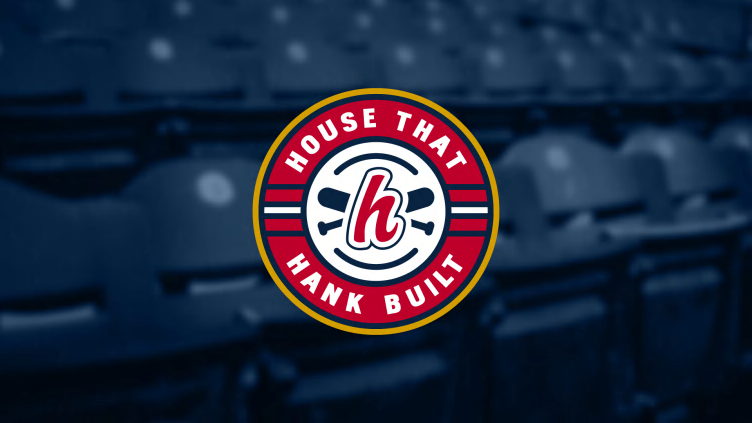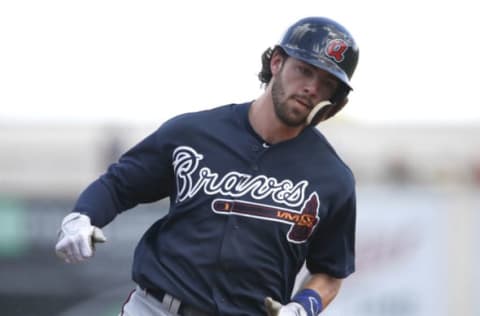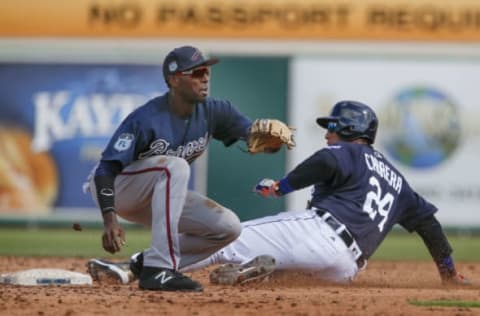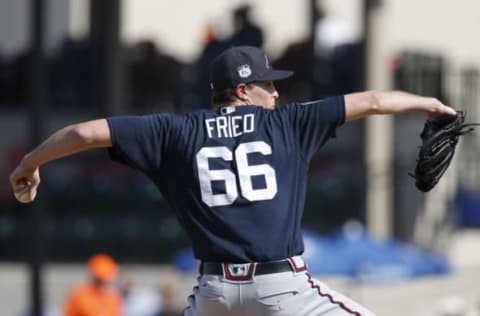5 Best and 5 Worst Trades of the Atlanta Braves Rebuild: Part 1


30 months ago. It was time for a big decision and giving credit to the organization, the Atlanta Braves decided on a direction and committed to it.
After the 2014 season, the Atlanta Braves had a serious problem. The major-league team was coming off another September collapse and overall was just mediocre. Bogged down by bad contracts, under performing players, and impending free agents, the long-term outlook was bleak.
Add all that to a minor-league system that was one of the worst in baseball and you can see the important crossroads the Braves found themselves at in the winter of 2014.
Frank Wren was fired as GM and John Hart was brought in to oversee the rebuild. John Coppolella was quickly named his right-hand man and while the exact dynamic of their roles was unclear early on, eventually Coppy was named GM and Hart the President of Baseball Operations.
With the front office stabilized it was time to turn over the roster. What followed was one of the most complete and thorough roster rebuilds in memory. In tearing down the house, they kept the master bedroom (Freddie Freeman and Julio Teheran) but everything else they basically took down to the studs.
Soon to be free agents – traded. Bad contracts – unloaded. Even cost-controlled, talented players were moved if the Johns felt the future value they were receiving was greater than the present value they were giving. It was absolute. And as a fan, it hurt.
The good news, though, is it looks like it’s coming to an end. The farm system has been reloaded at an almost historic level. The big club is ready to be at least respectable some veterans ready to stabilize the present while a pipeline of elite talent ready to contribute to the future. The rain clouds have dissipated if you will and hope is on the horizon.
So it feels like a good time to do a postmortem of sorts: what worked and what didn’t.
In a 3-part series, we’re going to look at the 5 best trades, the 5 worst trades and some honorable mentions that helped shape this rebuild.
A few points before we get started:
- I’ll try to explain my choices logically but this is inherently a subjective exercise. You will disagree with some of it and that’s okay. Just be respectful in your disagreement.
- I’m fully aware this process wasn’t built entirely on trades. Drafting, free agent signings, and international spending all contributed in big ways. But for now, we’re just looking at trades.
- I’ve chosen to measure each trade on its own merit. No connecting the dots down the line. For instance, the Jason Heyward/Shelby Miller trade doesn’t get a bump because of what Miller was eventually turned into. The Braves didn’t make trade 1 knowing trade 2 was going to happen so it shouldn’t be evaluated that way.
Okay: onto this list…

Braves trade SP Lucas Harrell and RP Dario Alvarez to Texas for 2B Travis Demeritte.
This trade makes the list because of the almost comical buy-low sell-high aspect of it. Atlanta signed Lucas Harrell to minor league deal in the middle of the 2016 season and picked up Dario Alvarez on the waiver wire.
No offense to the players but these were scraps that basically any team in baseball could’ve had for free and Coppy turned them into a living, breathing prospect.
And not just any prospect. MLB.com just rated Demeritte the 9th best prospect in Atlanta’s #1 system and he’s probably a top 5 prospect in an average system. He has his issues for sure – contact being the number one red flag – but the power is very real and Eric Longenhagen of Fangraphs just recently described his defensive range and athleticism as “remarkable.”
There’s a bit of Javy Baez comp in there if you squint hard enough but even if he doesn’t reach his potential, the spare parts he was acquired for make this one of the best trades of the rebuild.
Braves trade C Evan Gattis and SP James Hoyt to Houston for SP Mike Foltynewicz, 3B Rio Ruiz and SP Andrew Thurman.
I chose this trade for two simple reasons. One, Foltynewicz and Ruiz look, at the very worst, to be major league contributors and two, Evan Gattis always seemed destined to play in the American League.
Gattis “can” catch but it isn’t ideal and Houston has learned it’s best to limit his catching opportunities while utilizing him as the DH a majority of the time and that obviously wasn’t going to be an option for Atlanta.
Not to mention, as a bat first player, Gattis has a career .302 OBP and basically has to hit a bunch of home runs just to keep from being replacement level (fortunately for Houston, he has).
Meanwhile, Foltynewicz has separated himself as the best pitcher among Atlanta’s first wave of prospects and certainly the most likely to stick in the rotation. The arm is special and if the improvements he showed last year continue, this return looks even better for Atlanta.
And that doesn’t even account for Ruiz, who’s re-dedication to his body and his craft has turned a once questionable future into at least a shot with the big-league club.
I, like most fans, loved Evan Gattis but turning a flawed player into two potential major pieces for the next contending team is a big win.
Braves trade INF Phil Gosselin to Arizona for SP Bronson Arroyo and SP Touki Toussaint.
The greatness of this trade is tied to the creativity it took to pull it off as well as the player it netted. Arizona decided it need to shed salary and Bronson Arroyo and his $10M commitment was the piece chosen to move.
Atlanta, having a surplus of payroll space at the time, decided to facilitate the transaction for a fee. That fee: Touki Toussaint.
Touki was a recent a first round pick with some of the nastiest stuff in the minors and someone the Braves had being eyeing for a while. Hilariously, Arizona said yes to this deal trading away 40-50 million in value to save 10 million in salary.
This was just another example in a long of instances when Arizona’s front office showed they had no idea how to properly value players or assets and Coppy swooped in to take advantage. And not for the last time.

Braves trade OF Justin Upton to San Diego for SP Max Fried, 2B Jace Peterson, OF Mallex Smith and OF Dustin Peterson.
The driving force behind this trade was simple. Justin Upton was a year from becoming a free agent and Atlanta had zero chance at resigning him. And since a rebuild was on the way, the best option was to move him for as much future value as possible.
San Diego provided that value as they were in the midst of “going for it”, the famous motto that’s been responsible for some of the worst trades ever.
This is one isn’t looking much different.
San Diego’s effort to contend fell flat that year and Upton walked at the end of the year. Atlanta meanwhile got what looks like 4 major league caliber players out of the deal.
- Mallex looks like at worst a solid fourth outfielder and at best a solid starting center fielder.
- Jace has carved out a nice role as a major-league utility player with quite a bit of positional versatility.
- Dustin was the breakout player of the year in Atlanta’s system looking like a solid everyday left field option.
But the true gem of this trade was Max Fried who was only available because he had recently had Tommy John surgery and his future was much more in question. Fried is healthy now and the stuff that made him a top prospect before the injury returned after the injury.
For my money, he’s the best pitching prospect in Atlanta’s system and should he reach his potential, Fried for one year of Justin Upton will be historically bad for San Diego regardless of what the other guys do.
Braves trade SP Shelby Miller for CF Ender Inciarte, SS Dansby Swanson, and SP Aaron Blair.
What else? I said before, Coppy wasn’t finished taking advantage of the ineptitude out in the desert and with this trade, he had his Mona Lisa.
I’m not sure the impact of this trade can be overstated. It changed two franchises.
More from Tomahawk Take
- Atlanta Braves 2023 Preseason Top 30 Prospects List: 16-20
- Braves News: Reacting to Dansby’s departure, Michael Brantley, more
- Atlanta Braves: Best Option at Shortstop Now That Dansby Swanson is Gone
- Atlanta Braves GM Alex Anthopoulos’ views on the offseason so far
- Braves News: Dansby goes to the Cubs, prospect rankings, more
For Arizona, it ended a regime. Dave Stewart brought it up by name in a recent interview after being let go as one he regretted. Good call, Dave.
Since then, Arizona has fully implemented analytics into their decision making and since they were the last holdout, you could say this trade ended the “old school” way teams are run. It was that bad.
For Atlanta, it accelerated a rebuild by maybe 2 or 3 years. They got two franchise cornerstone position players at arguably the two most important positions on the field and did it at a time when the system was very arm heavy.
All this, plus Blair, for Shelby Miller, who while a good pitcher, probably wasn’t worth Inciarte by himself.
It was a heist at a level the Ocean’s 11 would’ve been envious of and it sent two franchises in two different directions.
Next: Who Are Some Other Trade Possibilities?
Part 2 Coming Soon: The 5 Worst Trades.